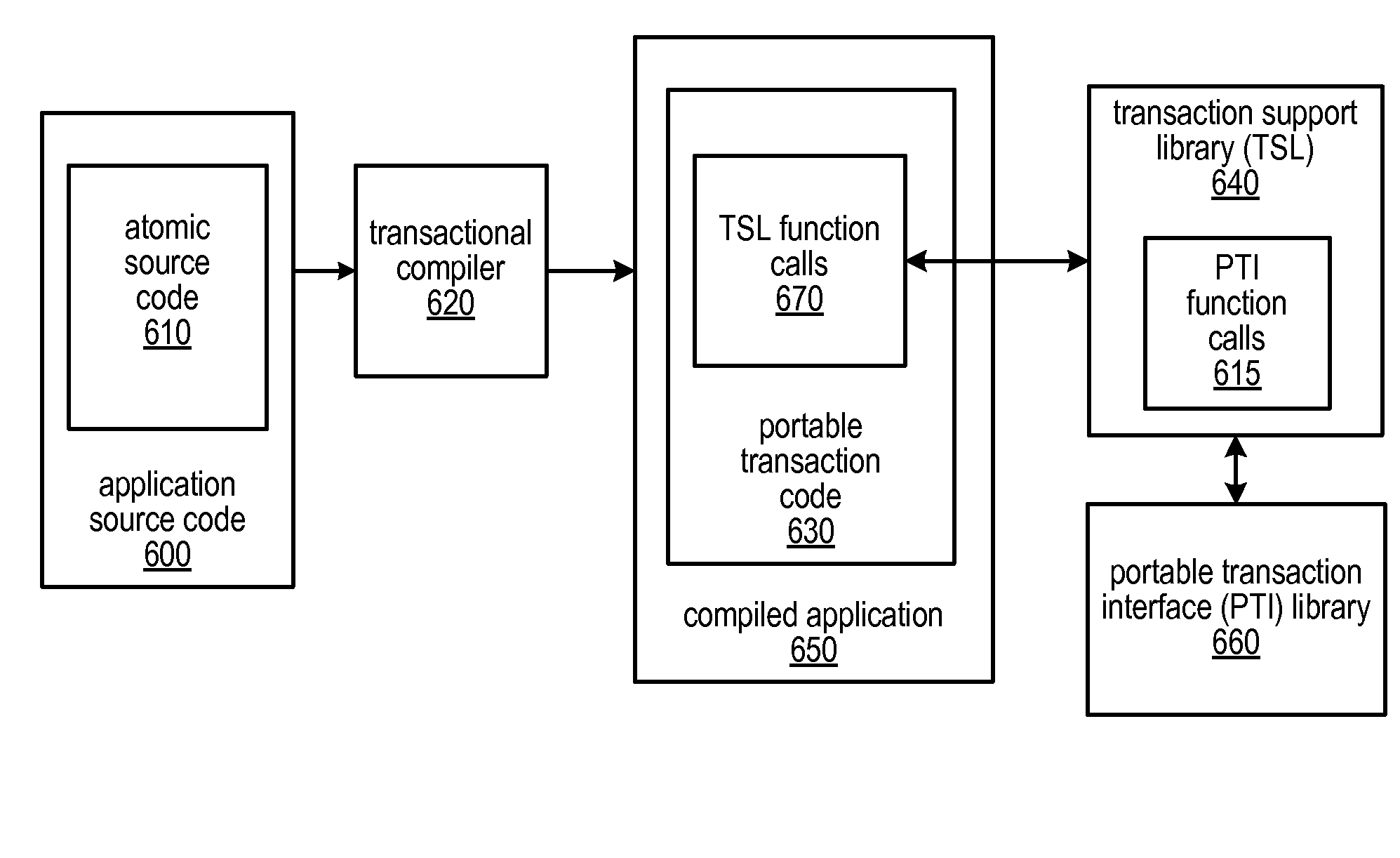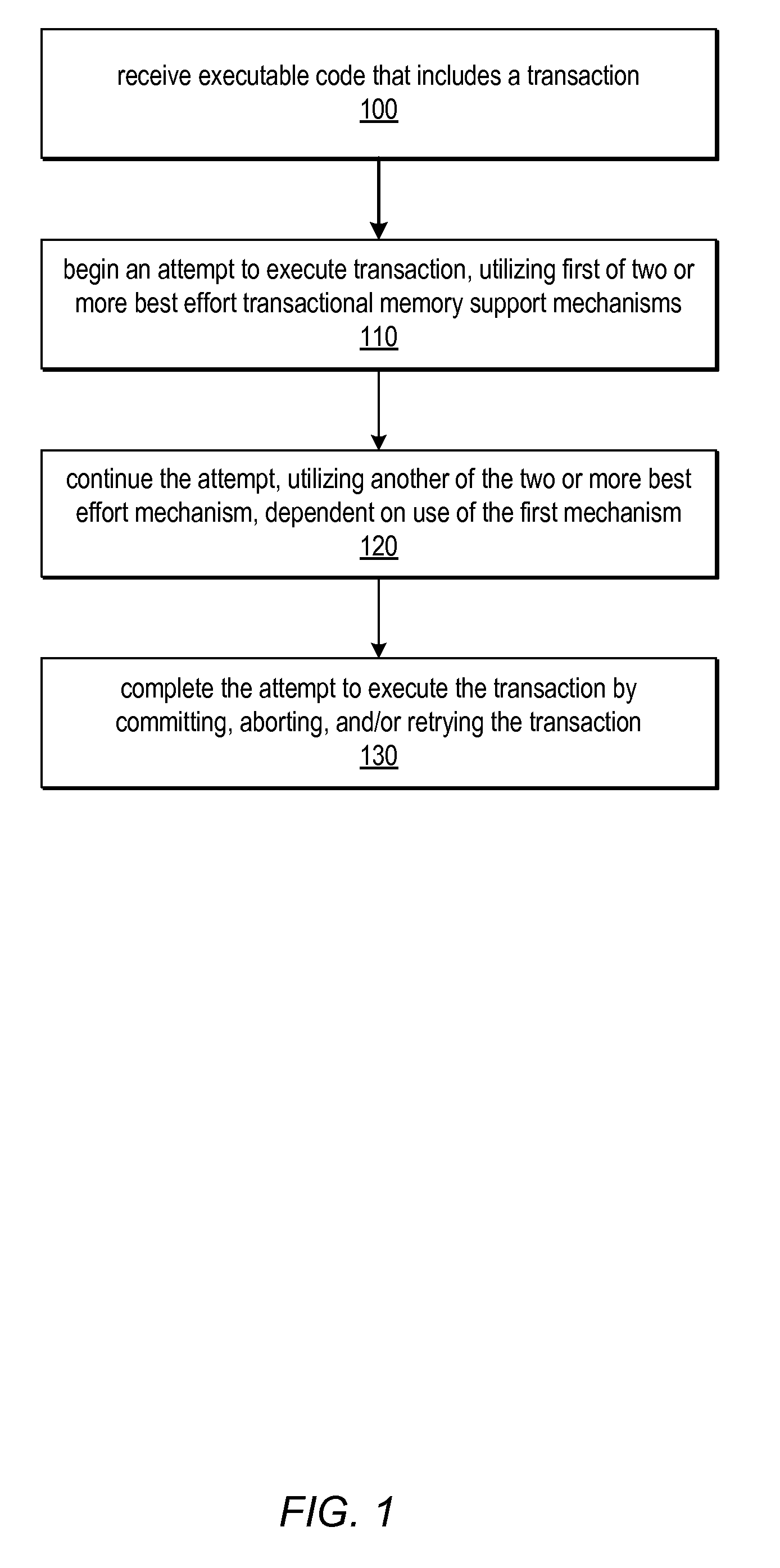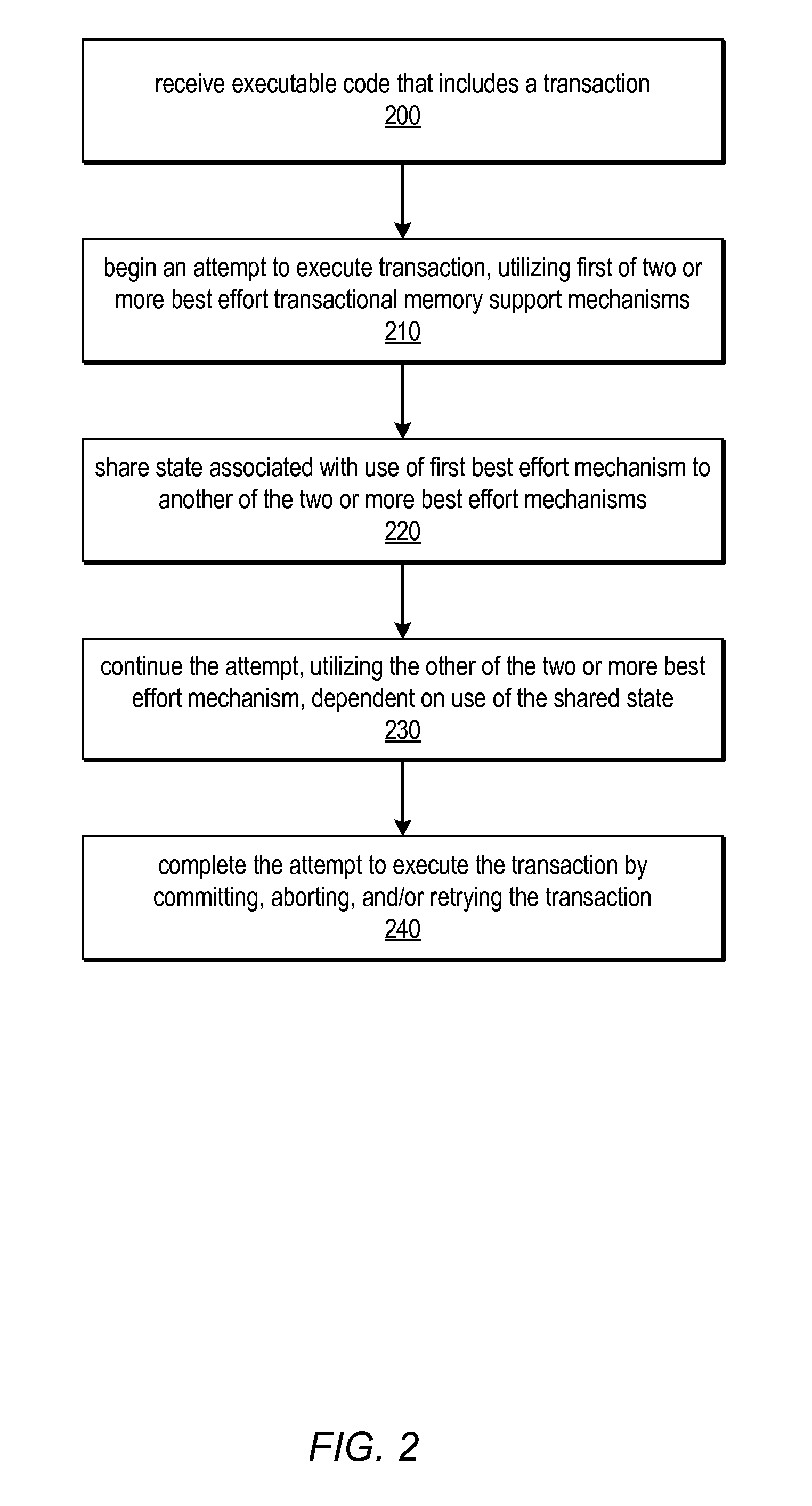System and Method for Utilizing Available Best Effort Hardware Mechanisms for Supporting Transactional Memory
- Summary
- Abstract
- Description
- Claims
- Application Information
AI Technical Summary
Benefits of technology
Problems solved by technology
Method used
Image
Examples
example implementation
for Processor with RSM-Like Feature, but No BEHTM Mechanism
[0105]The pseudo-code below may in some embodiments be used in an implementation that includes an RSM-like feature, as described above, but no other BEHTM support or hardware transaction mechanism.
bool tls_anyReadsMonitored = FALSE;int tls_counterSnapshot;loadtype PTI_loadAndMonitor(loadtype* addr) { if (!tls_anyReadsMonitored) { tls_anyReadsMonitored = TRUE; tls_counterSnapshot = readMarkCounter( ); / / Snapshot mark counter / / for later comparison } return loadSetMark(addr); / / Use RSM feature to load and set mark on addr}bool PTI_readsStillValid( ) { return !tls_anyReadsMonitored || (tls_anyReadsMonitored && readMarkCounter( ) == tls_counterSnapshot);}void PTI_resetMonitoring( ) { tls_anyReadsMonitored = FALSE; resetMarkCounter( );}int PTI_beginTransaction( ) { return HTM_FEATURE_NOT_SUPPORTED;}int PTI_commitTransaction( ) { assert(0); / / execution should never reach here, / / as PTI_beginTransaction always fails}
[0106]Not...
PUM
 Login to View More
Login to View More Abstract
Description
Claims
Application Information
 Login to View More
Login to View More - R&D
- Intellectual Property
- Life Sciences
- Materials
- Tech Scout
- Unparalleled Data Quality
- Higher Quality Content
- 60% Fewer Hallucinations
Browse by: Latest US Patents, China's latest patents, Technical Efficacy Thesaurus, Application Domain, Technology Topic, Popular Technical Reports.
© 2025 PatSnap. All rights reserved.Legal|Privacy policy|Modern Slavery Act Transparency Statement|Sitemap|About US| Contact US: help@patsnap.com



